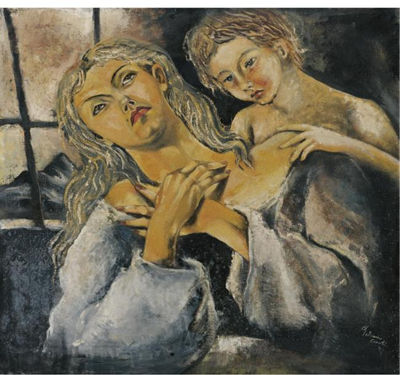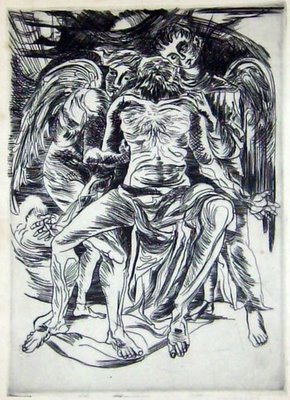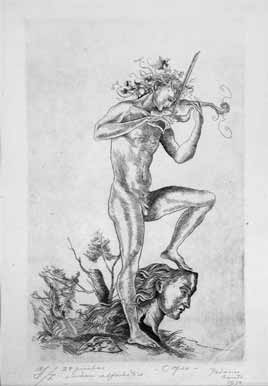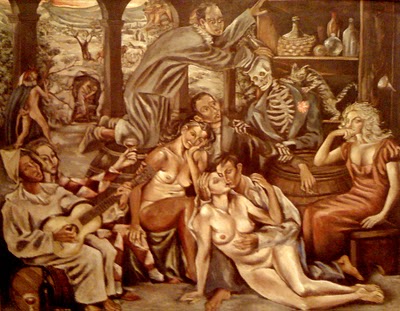<Back to Index>
- Painter and Illustrator Roberto Montenegro Nervo, 1885
- Painter and Sculptor Federico Heraclio Cantú Garza, 1907
PAGE SPONSOR
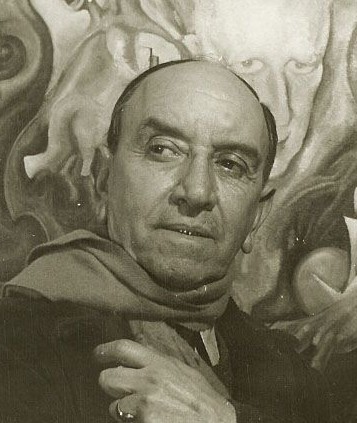
Roberto Montenegro Nervo (February 19, 1885 in Guadalajara - October 13, 1968 in Mexico City) was a Mexican painter, illustrator and stage designer.
In 1903, Roberto Montenegro began studying painting in Guadalajara under Felix Bernardelli, a Brazilian - Mexican artist who had established a school of painting and music in that Mexican city, and he produced his first illustrations for "Revista Moderna", a magazine that promoted the Latin American modernist movement and for which his cousin, the poet Amado Nervo, wrote. He lived in Mexico City, and in 1904 began studying architecture. It wasn't long after he abandoned it to study at the Academia de San Carlos under the talented artists Antonio Fabres, Julio Ruelas, Leandro Izaguirre and German Gedovius. Some of his fellow students were Diego Rivera, Ángel Zárraga and Francisco Goitia.
Eventually he was awarded a scholarship from the Mexican government to study at the Academia de San Fernando in Madrid. It was here that he met Joaquín Sorolla and Ignacio Zuloaga. These two great painters became a big influence in his work. He moved to Paris in 1907 and became interested in cubism. He had the fortune of meeting Picasso, Juan Gris, Braque and Jean Cocteau while he stayed in France. His skill as an illustrator landed him a job making drawings for Le Temoin, a local magazine. He also wrote a biography of Russian dancer Vaslav Nijinsky and illustrated an edition of Aladdin's Lamp.
When the First World War broke out, Montenegro was forced to move to Mallorca and stayed there for five years. During this time he met the highly recognized painter from Catalonia, Anglada Camarasa, who also became an influence for him.
When Montenegro's returned to Mexico, he was commissioned to paint several frescoes in the convent of the former Colegio Máximo de San Pedro y San Pablo (Great College of Saints Peter and Paul) by José Vasconcelos. One of his best works "Fiesta de la Santa Cruz", he finished in 1924 on the staircase of that building. He was commissioned to paint several frescoes in the Bar Papillon in Mexico with Federico Cantu, he finished in 1934
An influential promoter of popular arts, Montenegro organized events like the first popular arts festival which was held in 1921. He also published "Pintura Mexicana del Periodo 1800 - 1860" in the 1930s and worked in the choreography of Aleko with Marc Chagall, and Lenormand's Le Simoun with Antonio Leal. He made many portraits. One of his most famous is the one of his longtime friend Chucho Reyes which can be seen at the Museo Regional de Guadalajara.
He
published "Retablos Mexicanos" in 1951 and exhibited in Mexico and
abroad, earning him several recognitions. He was fortunate enough to
have a retrospective of five decades of his work be held at the Palacio de Bellas Artes in Mexico City in 1965. Roberto Montenegro died on October 13, 1968.
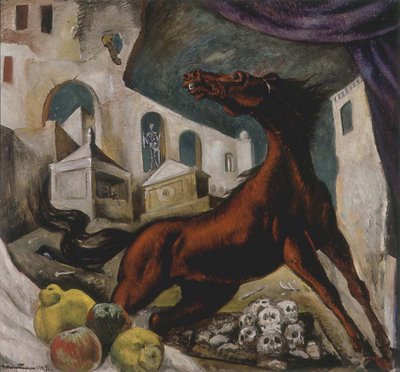
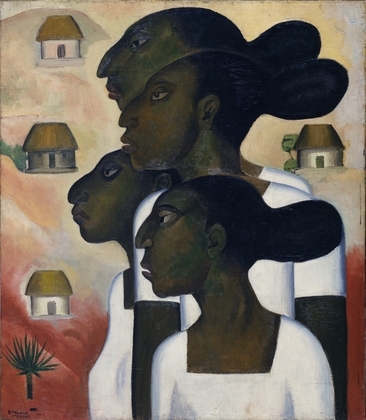
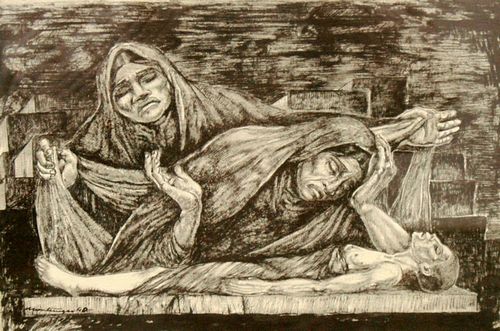
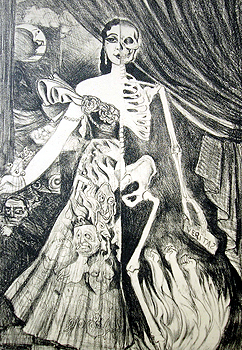
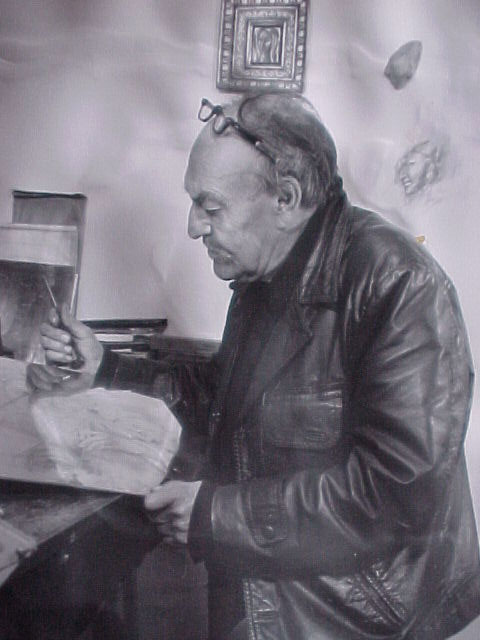
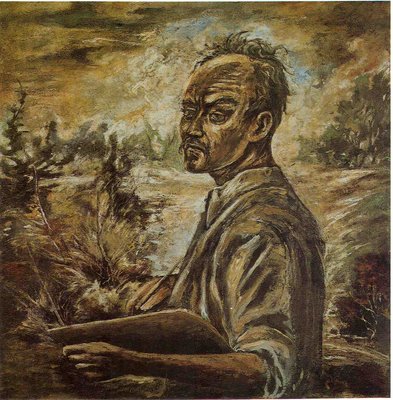
Federico Heraclio Cantú Garza (b. Cadereyta Jiménez, March 3, 1907 – d. Mexico City, January 29, 1989) was a Mexican painter, engraver and sculptor. Since he was 14 years of age, Cantú studied art at the Air Schools of Painting with Ramos Martínez. He was also cofounder of the Salón de la Plástica Mexicana and the Escuela Nacional de Pintura, Escultura y Grabado "La Esmeralda". Cantú demonstrated uncanny artistic talent in his early years, painting in a realistic manner through his childhood and adolescence “Homenaje a Lord Byron 1929”. His revolutionary artistic accomplishments brought him universal renown.
Cantú Garza was son of the physician Adolfo Cantú Jáuregui and his wife, the writer María Luisa Garza aka "Loreley". He visited the open air painting school of Coyoacán, and traveled to Europe and the United States from 1924 until the mid 1930s. During this time, he lived in the Rue Delambre in Montparnasse from 1924 to 1934. He exhibited in the Exposition Park Museum in Los Angeles, California, in 1929, and his wife Luz Fabila spent her academic years with Frida Kahlo from 1922 to 1924. Cantú developed a close friendship to André Breton, Mateo Hernandez, Lino Enea Spilimbergo, Renato Leduc, Antonin Artaud, José Moreno Villa, Jean - Emile Puiforcat and Luis Cardoza y Aragón.
In 1934 the Galería de Arte Mexicano showed works of the Big Three Mexican muralists Los Tres Grandes) Diego Rivera, José Clemente Orozco, and David Alfaro Siqueiros as well as those of Jean Charlot, Roberto Montenegro, Rufino Tamayo, and of him. In contrast to the Tres Grandes, who were identified with the period for the most time of their artists' lives, the painters Alfredo Ramos Martínez, Jorge Juan Crespo de la Serna, Jean Charlot, Francisco Cornejo, Luis Ortiz Monasterio, José Chávez Morado and
Federico Cantú lived, studied, taught, and worked in Los Angeles and New York (1929 – 1942).
In 1939 Cantú joined the Perls art gallery
that had recently been opened in New York. By 1940 Cantú became a
favorite of the American art collector MacKinley Helm.
Mac began acquiring his drawings and paintings and exhibiting them in
Metropolitan Museum, Santa Barbara Museum, Philadelphia Museum.
After 1943 Garza taught at "La Esmeralda", and studied
engraving under Carlos Alvarado Lang in 1945.
After 1949 he taught at University of California.
After
1951 he devoted himself mainly to painting murals in private homes.
In
1960 he began producing reliefs and emblematic sculpture of the Mexican
Institute of Social Security (IMSS) & Loteria Nacional.
He created his last monument, a memorial to Alfonso Reyes, in 1988.
His
murals decorate monuments, public buildings and universities. His mural
"El flechador del sol" (1961) has a total surface of 650 sqm. He is also the author of the mural of the Universidad Autónoma de Nuevo León (UANL) Capilla de la Universidad UIC, La Purísima NL Monterrey es:Iglesia de la Purísima (Monterrey). His works were exhibited in notable galleries, for example in the Tate Gallery and in the Perls Galleries, as well as in the Museum of Modern Art. "Gloria and tristemente" (CYDT collection) and his nude "Mujer Desnuda" were sold at Sotheby’s in 2005. His sister Diana was married to Gilberto Martínez Solares.
